Tools & Materials 
Plunger
Channel-type pliers
Small wire brush
Screwdriver
Flashlight
Bottle brush
Wire
Rag
Bucket
Replacement gaskets
Teflon tape
Hand auger
Drain tube clamp
Protective equipment
Every sink has a drain trap and a fixture drain line. Sink clogs usually are caused by a buildup of soap and hair in the trap or fixture drain line. Remove clogs by using a plunger, disconnecting and cleaning the trap (this page), or using a hand auger (page 407).
Many sinks hold water with a mechanical plug called a pop-up stopper. If the sink will not hold standing water, or if water in the sink drains too slowly, the pop-up stopper must be cleaned and adjusted (pages 404 to 405).
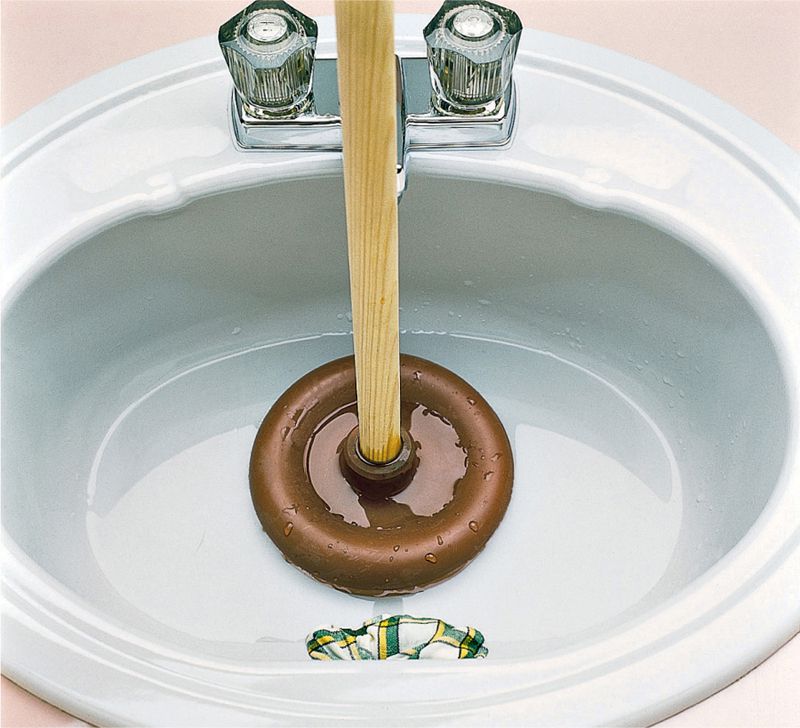
Clogged lavatory sinks can be cleared with a plunger (not to be confused with a flanged force-cup). Remove the pop-up drain plug and strainer first, and plug the overflow hole by stuffing a wet rag into it, allowing you to create air pressure with the plunger.
 HOW TO CLEAR A SINK TRAP
HOW TO CLEAR A SINK TRAP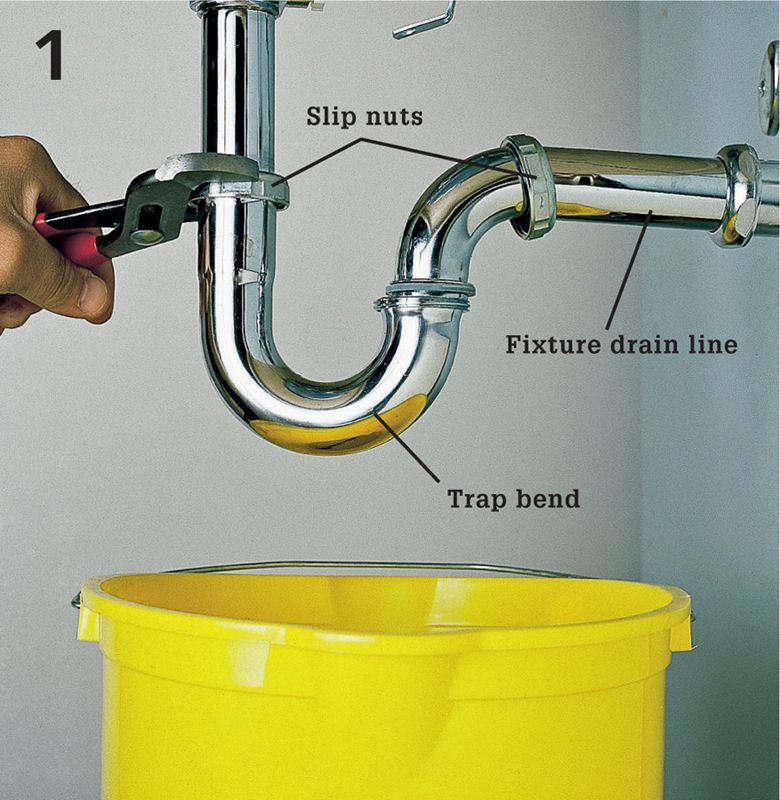
Place bucket under trap to catch water and debris. Loosen slip nuts on trap bend with channel-type pliers. Unscrew nuts by hand and slide away from connections. Pull off trap bend.
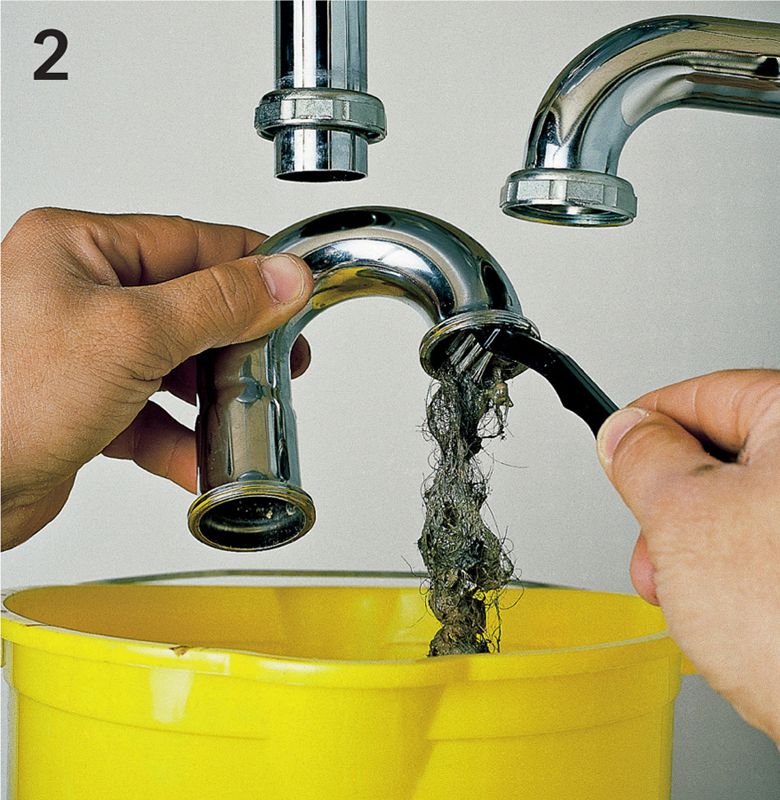
Dump out debris. Clean trap bend with a small wire brush. Inspect slip nut washers for wear and replace if necessary. Reinstall trap bend and tighten slip nuts.
 HOW TO CLEAR A KITCHEN SINK
HOW TO CLEAR A KITCHEN SINK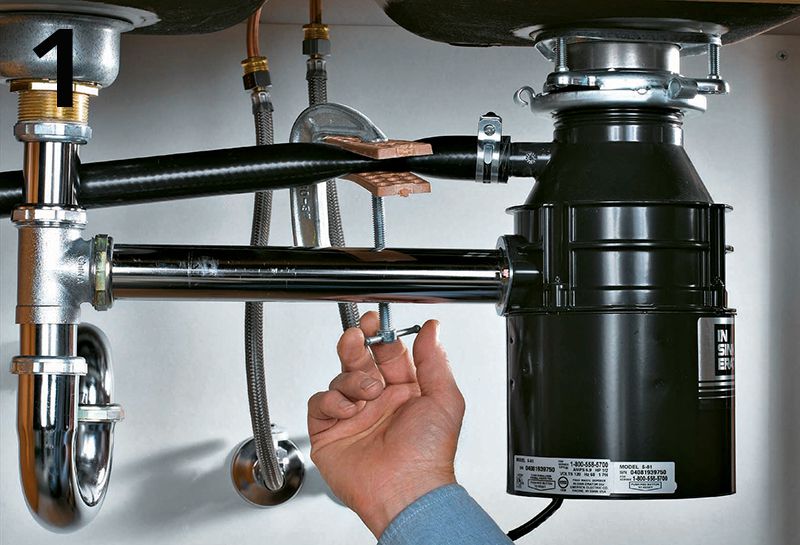
Plunging a kitchen sink is not difficult, but you need to create an uninterrupted pressure lock between the plunger and the clog. If you have a dishwasher, the drain tube needs to be clamped shut and sealed off at the disposer or drainline. The pads on the clamp should be large enough to flatten the tube across its full diameter (or you can clamp the tube ends between small boards).
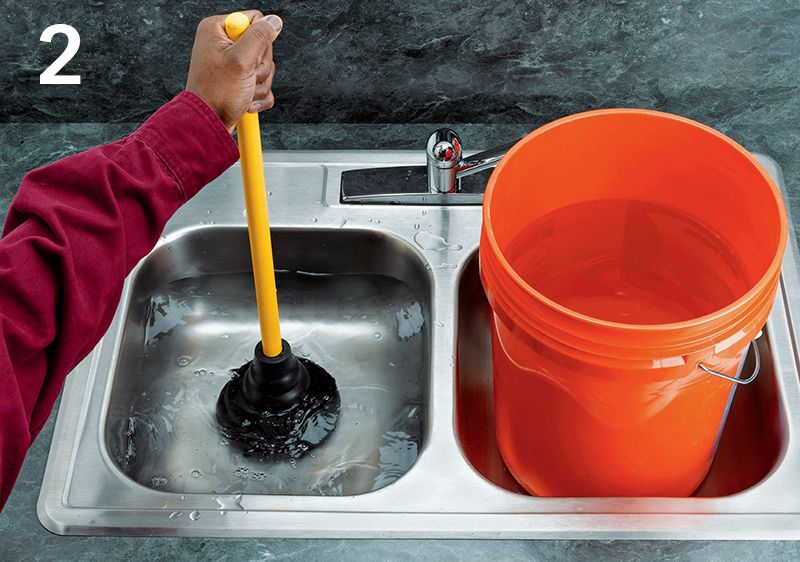
If plunging doesn’t work, remove the trap and clean it out. With the trap off, see if water flows freely from both sinks (if you have two). Sometimes clogs will lodge in the T-fitting or one of the waste pipes feeding it. These may be pulled out manually or cleared with a bottlebrush or wire. When reassembling the trap, apply Teflon tape clockwise to the male threads of metal waste pieces. Tighten with your channel-type pliers. Plastic pieces need no tape and should be hand tightened only.
 HOW TO USE A HAND AUGER AT THE TRAP ARM
HOW TO USE A HAND AUGER AT THE TRAP ARM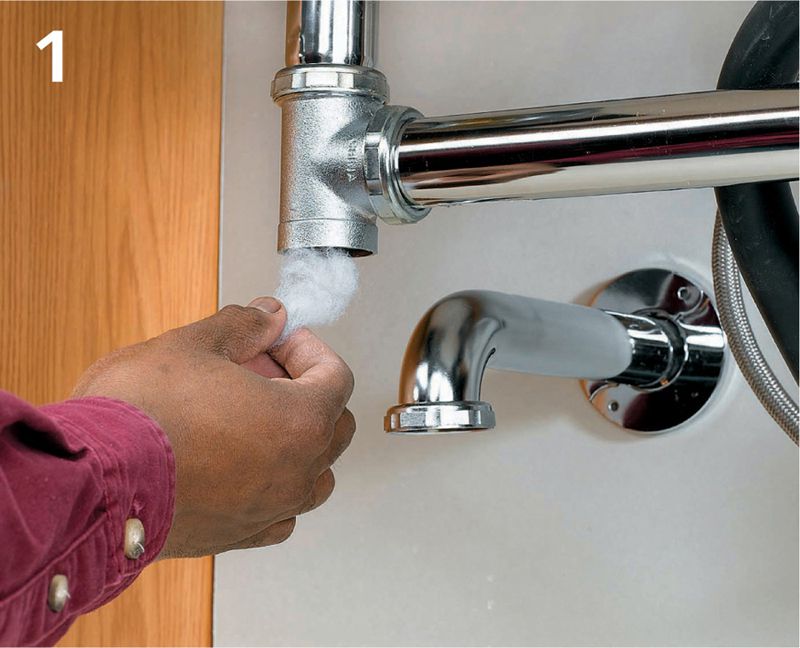
If there is a second basin, have a helper hold a basket strainer plug in its drain or put a large pot or bucket full of water on top of it. Unfold the skirt within the plunger and place this in the drain of the sink you are plunging. There should be enough water in the sink to cover the plunger head. Plunge rhythmically for six repetitions with increasing vigor, pulling up hard on the last repitition. Repeat this sequence until the clog is removed. Flush out a cleared clog with plenty of hot water.
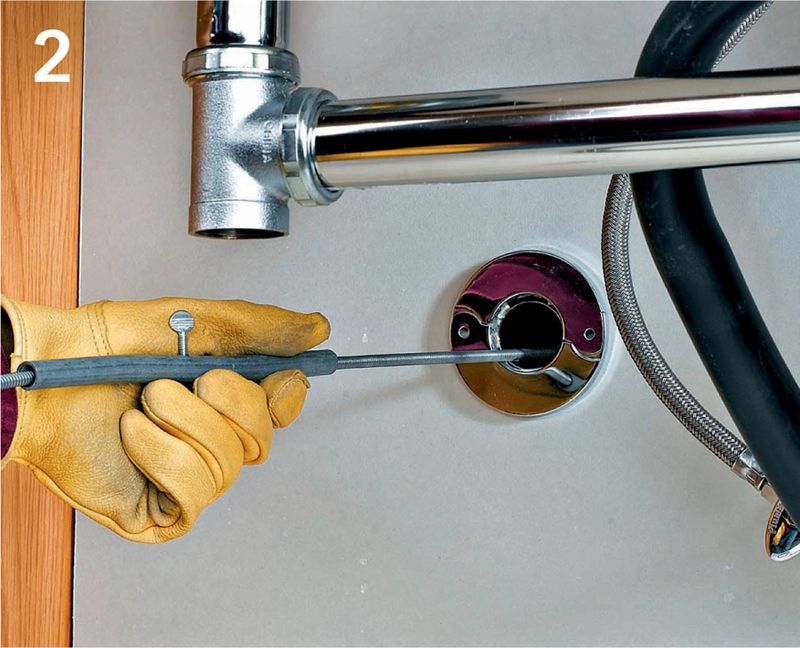
If you suspect the clog is downstream of the trap, remove the trap arm from the fitting at the wall. Look in the fixture drain with a flashlight. If you see water, that means the fixture drain is plugged. Clear it with a hand-crank or drill-powered auger.